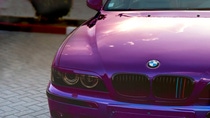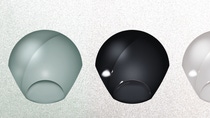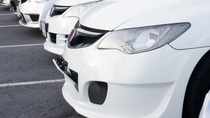Media
The smaller the car, the more vivid the color—BASF Color Report for Automotive
The chemical company’s annual report breaks down vehicle color trends for 2017.

Did you know that the smaller the vehicle the more likely its color will be bolder? That’s just one of the results from BASF’s global overview of car segments for the latest year.
“The small-car buyers are oftentimes younger people. They generally think of their vehicles as being more dynamic and sporty,” said Paul Czornij, head of design at BASF’s Color Excellence Group, North America, in an interview. “As luck would have it, brighter colors also look pretty good on small cars.”
Other vehicle trends worldwide included— white being the number one color in the automotive market; achromatic colors ruling the global roadways; and the Sport Utility Vehicle market continuing to climb, according to the BASF Color Report for Automotive OEM Coatings 2017.
“We looked at what vehicles were on the road in 2017,” Czornij added. “We also broke it down by segment and then we compared region to region and white came out on top in every region and white was popular in the segments also.”
The German company came out with its annual global analysis of color distribution for the current automotive market. The exclusive BASF data was gathered in collaboration with four design studios from different parts of the world that included North America; Europe, Middle East and Africa; as well as Asia Pacific markets, depicting the share of the most important color areas. The focus on these regions creates a more profound understanding of the respective markets and its color drivers. The global perspective also gives an overview of the most crucial colors, showing a high percentage of achromatic dark colors for larger vehicles.
Achromatic colors are those that lack hues—such as black, white, silver and gray. According to Czornij, those colors tend to trend on cars, since they’re more conservative, making the car easier to sell down the road. And if you end up keeping the vehicle, it is “able to absorb the shift in color preferences that you might see in the fashion world or other areas. Your car would still look nice and let you project yourself as ‘in style’ to the rest of the world,” he said. Even in the rising segment of electric cars, achromatic colors are still the preference, with gray and silver superseding the popularity of white or black at the early stage in electric vehicle development.


The color trends in the three respective areas are as follows: In Europe, Middle East and Africa—about 78% of all cars were painted white, black, gray or silver last year, marking a continuing trend towards achromatic colors. Of the chromatic shades, blue continues to dominate the vehicle color domain. While the overall share of 10% remained stable, the proportion of blue increased significantly in terms of its share in the chromatic palette—nearly every second chromatic car produced in Europe in 2017 was blue—a trend predicted by BASF’s Coatings color designers and reflected in the numerous blue shades in the last color trend collections.
“Blue has a lot of versatility to it. You can have a light blue, very dark blue, deep saturated blue and gray-ish blue,” said Czornij. “Psychologically, blue also is a very positive, optimistic, and I would say almost a trustworthy color.”
In Asia, on the other hand, bright red dominates the chromatic range of colors in the automotive market. Since red cars attract attention, it’s an important factor in mature markets of Asia Pacific. “Red is sort of a new way to project an image of oneself in a culture that is traditionally been very conservative and inward looking,” Czornij added. “Red, being a bold, more expressive color forges that link to the younger generation taking a stronger role in society.” In terms of achromatics, with an overall distribution of 49 percent, white is the most popular color in the region. Culturally, white colors are associated with the positive image of purity and intelligent, advanced technology in Asia.
In North America, achromatics dominate car vehicle colors, including electric cars—white, black and silver/gray. New pigment technologies are producing special effects that shimmer and shine to show a variety of finishes, according to the report. On the chromatic end, both red and blue are equally significant in North America. Also, other colors, such as orange, are showing up in the analysis.
“Achromatic colors dominate the roadways across all regions at this point; and then when you look at chromatic, it’s interesting,” said Czornij. “In Europe they’re pushing the case for blue. Asia is pushing the case for red, and if you look at North American numbers, red and blue are kind of running neck and neck.”
On a global scale, the SUV segment shows a strong dynamic globally, as its sales numbers rise as well as new models pop up. SUVs take on a leading role in terms of growth figures of the global automotive market. Consumers worldwide appreciate the innovative designs and functionalities of SUVs. As far as color goes, white and black are still going strong within this segment, but chromatic colors such as red, blue and especially brown are catching up in the SUV color palette.
In short, the global overview of vehicle segments demonstrates that the range of achromatic color comprises a major share. The smaller the car, the brighter the color palette. White is globally the most popular color in all segments, with every third car driven being that shade; while in the large-car segment, one third of the automobiles leave the factory in black. In the chromatic color range, blue is the number one color within all segments, followed closely by red.
“It’s important for us to communicate with our customers to let them know what is on the street in real time,” Czornij concluded. “It’s always good to understand the movement in the industry in terms of consumer preferences for color so that we can use that to explain overall trends.”
To read more about BASF’s Automotive Color Trends 2017/18 and what the color of your car says about you, click here.
.jpg)
Published by Anna Spiewak.
For media inquiries or to repurpose this article, please contact Lisa Brown.